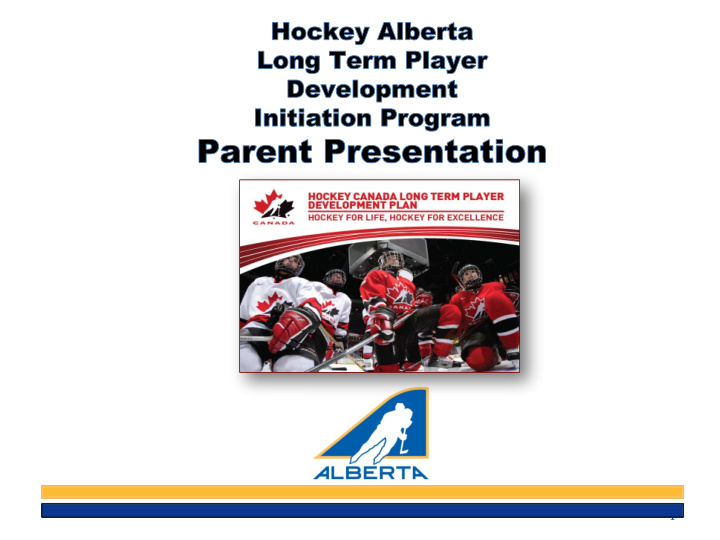



1
Background - Sport Canada Sport Canada created a movement to improve the quality of sport and physical activity in Canada through improved athlete training and better integration between all stakeholders in the sport system. Sport Canada’s Long Term Athlete Development (LTAD) Resource Paper “Canadian Sport for Life” (CS4L) sets out a framework to achieve this.
Canadian Sport for Life (CS4L) The vision behind CS4L is to reshape how they support sport and train athletes at all levels in Canada – from children to adults, from towns to cities and from province to province. This vision has encouraged every national sport organization in Canada to developed sport-specific LTAD guidelines for their athletes. Long Term Player Development is Hockey Canada’s hockey specific response to Sport Canada’s recommendation.
Hockey Canada’s Model Sport Canada created a movement to improve the quality of sport and physical activity in Canada through improved athlete training and better integration between all stakeholders in the sport system. Sport Canada’s Long Term Athlete Development (LTAD) Resource Paper “Canadian Sport for Life” (CS4L) sets out a framework to achieve this.
Hockey Canada’s Model FUNdamentals 1 – Male and Female aged 5-6 Focus is on the development of physical literacy Fundamental movement skills should be mastered and motor development emphasized and participation in many sports/activities is encouraged. For optimal skill acquisition, the basic hockey skills of skating and puck control are introduced through the Initiation Program. FUN competitions are also introduced in a team environment.
Hockey Canada’s Model FUNdamentals 1 – Male and Female aged 5-6 FUNdamentals 1 - Parents Encourage your child to participate in a wide variety of physical activities. Strength training should be done solely with the players own body weight. Other sports that build on fundamental movement skills applicable to hockey: - Gymnastics - Run, Jump, Throw programs - Soccer - Skating programs
LTPD Implementation Inventory of what we do with 5-12 year olds…… Do we teach the right things? Do we teach them correctly? Do we allow kids to create their own identity? Are we too structured? Are we an aligned and integrated system? Do we over-compete? Do coaches teach the right skills at the right age?
LTPD Implementation
Parent Education Few adults who were physically inactive as children become active as adults. Inactive adults tend to produce inactive children and the reverse is also true. Encouraging children to enjoy moving and promoting confidence in movement skills at an early age helps to ensure later participation in physical activity.
Why Parents Encourage Sport Parents often have their own reasons for seeing their children in sports, and problems arise when their motives conflict with those of their son or daughter. The result can be a very negative sporting experience for the child. Some of the most common problems arise when parents: place too much emphasis on winning. push their children to specialize in one sport too early. live their own dreams through their children. The ideal situation is when your child finds intrinsic reward in participating in the activity – otherwise known as FUN!
Parent Education The goal is to encourage the “Quiet Majority” to understand and support LTPD Active, Healthy Children More skilled players • Learn to move with confidence • Foundation Skills • Diversity in sports and activities • Confidence • Players for life Happier Children Successful children • Fun • Better at school • Success / Age appropriate • Life skills http://activeforlife.com/hockey/
Recommend
More recommend